Undergraduate Rio Mesa Scholars
Camera Trapping at Rio Mesa with Chloe Betts, 2016
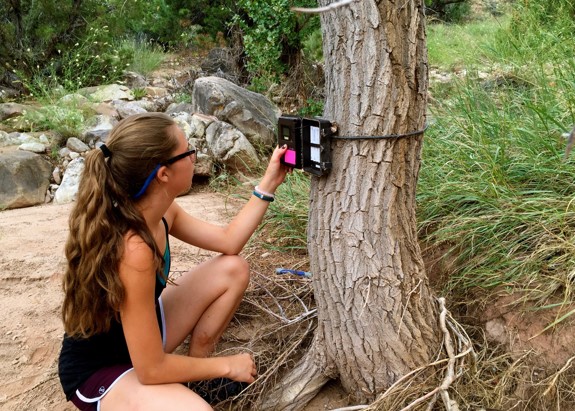 The camera trap project will generate data to begin a long-term study of mammal presence
which is important to the continued conservation of riparian and desert habitat in
southeastern Utah. A camera trap consists of a motion sensor-activated high resolution
digital camera, placed in a context where animals may pass by as part of their normal
behavior. This equipment will be used for future field seasons creating a long-term
study and provide university students with valuable experience in wildlife biology
and conservation ecology. This survey will create a comprehensive vertebrate species
list for the RMC and provide information on relative abundance, density and habitat
preferences of local wildlife. This study is important because the Bonderman Field
Station at Rio Mesa is a large area with limited human disturbance, making it an ideal
study area for acquiring data of animal density and abundance in a natural setting.
The camera trap project will generate data to begin a long-term study of mammal presence
which is important to the continued conservation of riparian and desert habitat in
southeastern Utah. A camera trap consists of a motion sensor-activated high resolution
digital camera, placed in a context where animals may pass by as part of their normal
behavior. This equipment will be used for future field seasons creating a long-term
study and provide university students with valuable experience in wildlife biology
and conservation ecology. This survey will create a comprehensive vertebrate species
list for the RMC and provide information on relative abundance, density and habitat
preferences of local wildlife. This study is important because the Bonderman Field
Station at Rio Mesa is a large area with limited human disturbance, making it an ideal
study area for acquiring data of animal density and abundance in a natural setting.
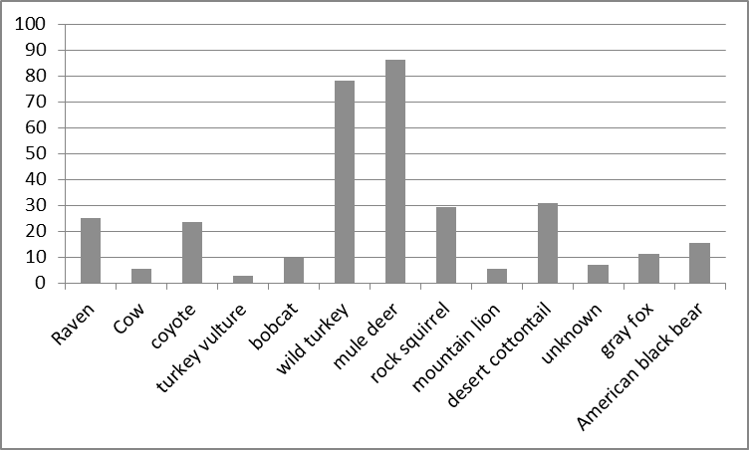
So far, the camera trapping project has provided information about the occurence of 12 species of animals, some of which are rarely observed in person. The figure to the right gives counts of how many times each species was spotted using a camera trap. For more information about the camera trapping project, contact Chloe Betts or Dr. Çağan Şekercioğlu. For some images captured by the camera traps, see the Camera Trap Image Gallery (coming soon).
Stone Tool Use Wear Analysis with Brock James, 2016
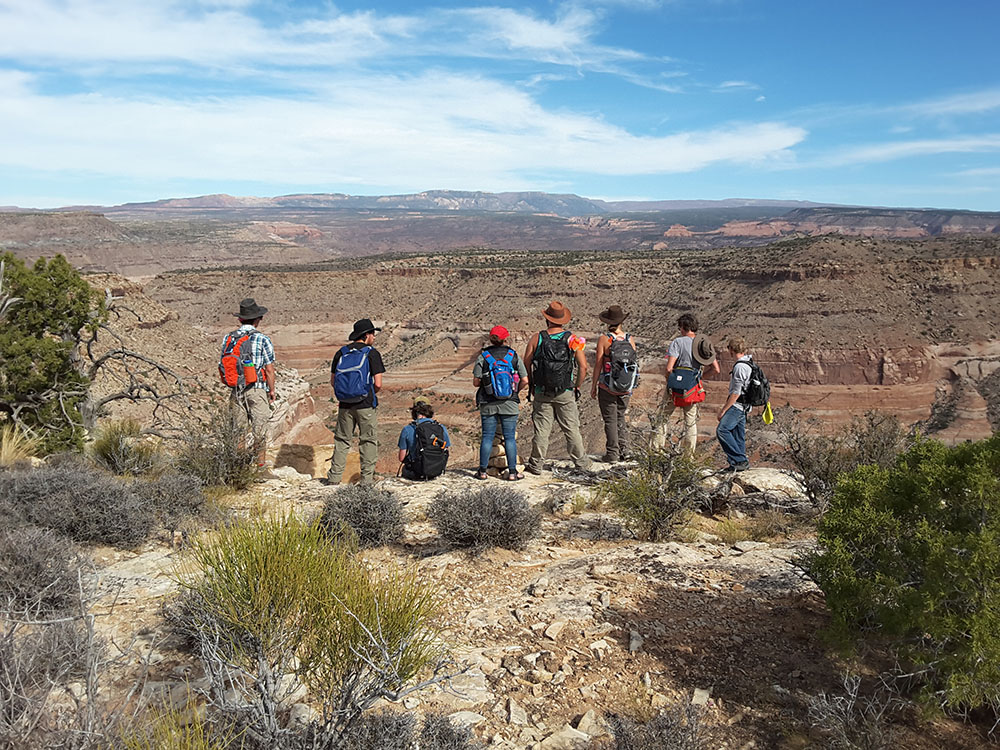 The acquisition and transport costs of material for the manufacturing of flaked stone
tools are incredibly high. However, despite these costs many archaeological sites
located far from lithic procurement areas contain many decortication (primary reduction)
waste flakes. One explanation for this phenomena is the use of primary reductions
as expedient blade tools. While this theory is generally accepted, the practice of
expedient tool use has not been quantified. This study aims to quantify spatial patterns
of use wear by demonstrating the relative decrease of high transport cost primary
reductions and the relative increase of use wear evidence with increased distance
from a lithic source. This is achieved through an artifact inventory and analysis
of several archaeological sites in the Lower Dolores River Watershed Area in south-eastern
Utah.
The acquisition and transport costs of material for the manufacturing of flaked stone
tools are incredibly high. However, despite these costs many archaeological sites
located far from lithic procurement areas contain many decortication (primary reduction)
waste flakes. One explanation for this phenomena is the use of primary reductions
as expedient blade tools. While this theory is generally accepted, the practice of
expedient tool use has not been quantified. This study aims to quantify spatial patterns
of use wear by demonstrating the relative decrease of high transport cost primary
reductions and the relative increase of use wear evidence with increased distance
from a lithic source. This is achieved through an artifact inventory and analysis
of several archaeological sites in the Lower Dolores River Watershed Area in south-eastern
Utah.
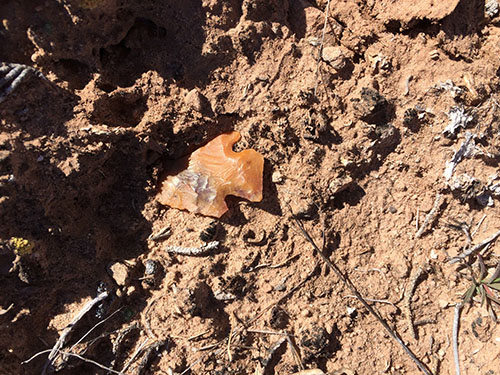
Fieldwork for this project is currently underway. For more information about this project, contact Brock James. For some images relating to archaeological projects near Rio Mesa, see the Archaeology Image Gallery (coming soon).
"Contemplation" - New Plein Air Paintings of Eastern Utah with Tyler Willmore, 2015
 From Utah Arts Magazine,
From Utah Arts Magazine, 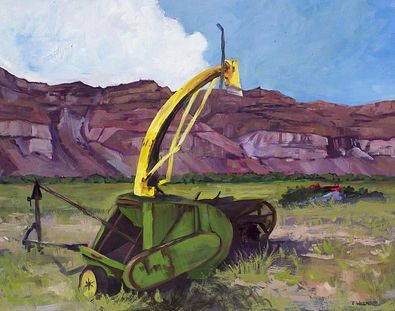
Willmore is a writer and a philosopher as well as a painter, and uses visual metaphor and the written word to help him map the reality of everyday situations. He uses the relationship between what is seen in the landscape and what is understood with the word to create visual and conceptual metaphors. His work in this series is a product of a yearlong research project at the University of Utah’s Rio Mesa Research Center, just outside of Moab. He states that his experience there was an attempt to create images where “landscape becomes symbolic of life’s journey and nature becomes representational of greater spiritual influence. It is an attempt to explore the balance outward and internal contextual perspectives as they pertain to the landscape.”
For more about Tyler's work, includig to browse and purchase his work, visit his website.
For more on past undergraduate research, click here.
